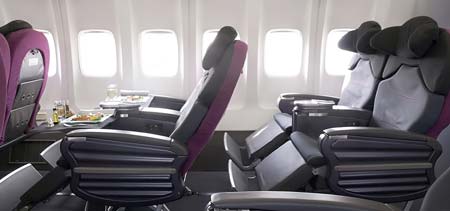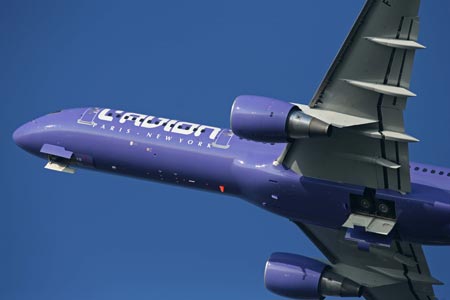For Marc Rochet, the opportunity to launch France’s first all-premium carrier was simply too “interesting” to pass up.
The former chief executive of AOM-Air Liberté was happily working on various projects as a consultant, including a study for proposed all-business carrier Elysair, when he was asked last August by the start-up’s shareholders to be its chief executive. Rochet accepted, passing over management duties of his consulting firm Aerogestion, which he founded in 1996 and has since grown into a 20-person operation, to an associate. “As long as my shareholders and customers are happy, I’ll stay,” Rochet says, adding he is not just an interim executive hired to launch Elysair, which was re-branded L’Avion just prior to commencing services in January 2007 from its Paris Orly base to Newark, outside New York.
 Rochet says leading L’Avion is “very different” from leading AOM-Air Liberté, which operated 14 aircraft and carried 3 million passengers per year before it ceased operations in 2001: “It wasn’t a huge company but it was a big one. It’s more interesting to start an airline from the beginning and see what can be done.”
Rochet says leading L’Avion is “very different” from leading AOM-Air Liberté, which operated 14 aircraft and carried 3 million passengers per year before it ceased operations in 2001: “It wasn’t a huge company but it was a big one. It’s more interesting to start an airline from the beginning and see what can be done.”
Exceeding expectations
So far, L’Avion has exceeded all initial projections. “We reached 78% load factor in June, which is well above target and business plan,” Rochet says. “We’re basically 10% above budget and business plan.”
While August is a slow month for business travel, Rochet says forward bookings for September and October are already solid. As a result, L’Avion’s shareholders have agreed to accelerate its expansion plan, which originally called for only one additional aircraft per year starting with a second aircraft in early 2008. L’Avion has already committed to leasing a second Boeing 757-200 and now plans to launch a second frequency on its Orly-Newark route around November.
The carrier is also studying 25 potential new routes, including from Paris to destinations in North America, Africa and the Middle East. “We are also looking at other opportunities due to open skies between Europe and the USA,” adds Rochet, explaining services from other European cities such as Geneva to US destinations are now feasible.
L’Avion was not originally planning to add a third aircraft, which would allow it to launch a second route, until 2009. Rochet now says “we will grow faster but we haven’t decided yet the speed”.
But do not expect L’Avion to add several aircraft and routes rapidly. L’Avion launched with only $32 million in the bank and Rochet has no plans to seek another infusion of capital.
“We have to be quite cautious,” he says. “We are focused to make losses but losses as reasonable as possible. I don’t want my shareholders to take more risk. We’ll take it step by step.”
L’Avion will also stick to one aircraft type and one product. Its 757 is now configured with 90 seats with a 48-inch pitch and a 150-degree recline. “I think flat seats are too expensive for the customer,” he says.

Single type
The 757 does not have enough range to reach Asia or the west coast of North America from Paris but Rochet says for at least the next few years he is not interested in a second aircraft type. “I don’t want to switch. It would be too big and too expensive,” he explains.
For now Rochet is focused on achieving his target of 20% of the New York-Paris premium market. He says about 300,000 passengers travel in business class and full-fare economy between the two cities every year, excluding connecting traffic. With two flights per day and potentially a third frequency during peak periods “15-20% is achievable”, he says.
Rochet acknowledges it will be for L’Avion to woo one-third of this market, or the roughly 100,000 passengers that work for large corporations. But he says while L’Avion initially targeted only small companies and individuals, it is now having some success securing contracts with large companies which typically have iron-clad relationships with network legacy carriers. “Big corporations are beginning to look at this type of operation because they are budget constrained,” he says. “I agree legacy carriers have an advantage but over time I think we can take a share.”
Target market
About half L’Avion’s passengers are existing business class passengers who previously flew on legacy carriers. The other half previously flew full-fare economy because business-class seats on legacy carriers are too expensive but find L’Avion’s fares, which start at $1,649 roundtrip before taxes, affordable.
Rochet says L’Avion has also attracted some passengers because it flies to Paris Orly instead of Charles de Gaulle, which is used by all the legacy carriers operating on the Paris-New York route. In fact US carriers led by Continental Airlines tried to block L’Avion’s application for slots at Orly because they are precluded from operating at the airport. “Orly is a very convenient airport and Newark is convenient for New York,” Rochet says.

Click here for more Airline Business interviews
Source: Airline Business
















